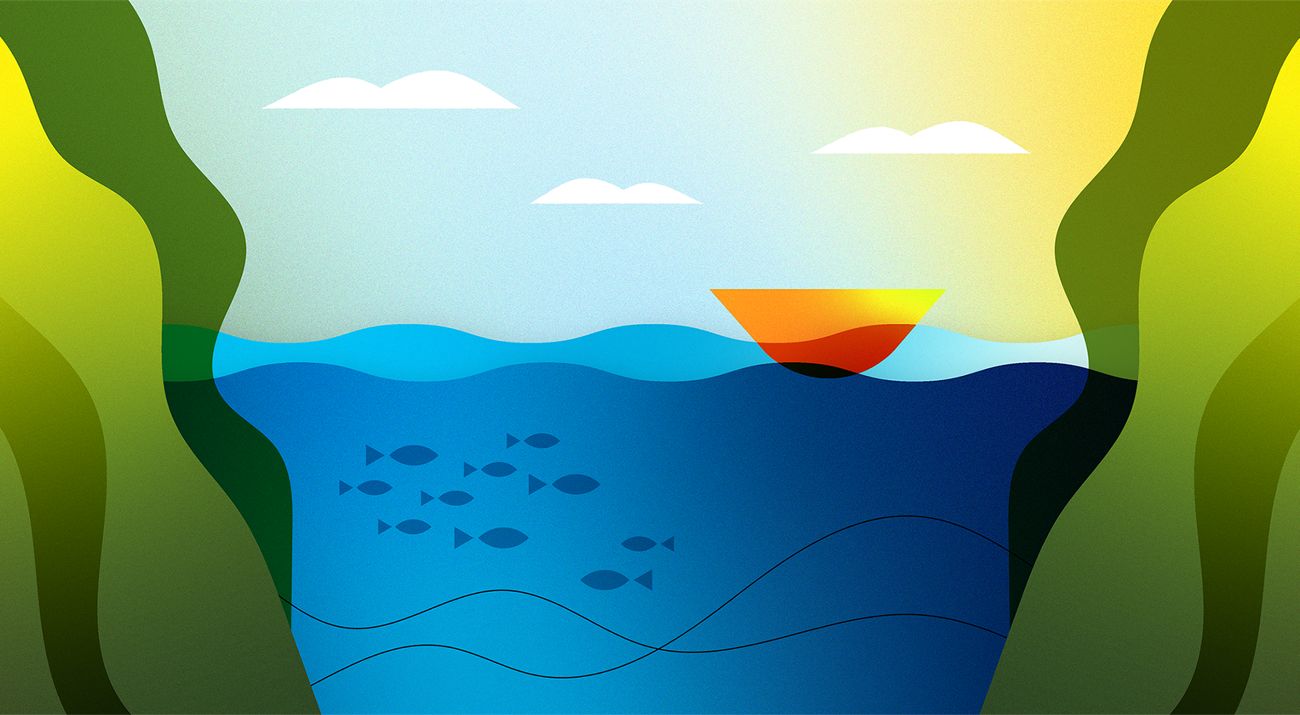This article originally ran in the March 2022 issue of the Global Insights newsletter. Subscribe here to get exclusive insights like these straight to your inbox.
Update: In March 2023, the world’s governments finalized a new United Nations Treaty for the High Seas.
See TNC's press statement.
See Ten Things You Should Know About the High Seas Treaty.
Our planet’s tightly woven, interconnected natural systems are vital to life and livelihoods. Yet with each passing season, we are witnessing the crushing realities of the climate crisis and biodiversity loss. In its 2023 Global Risks Report, the World Economic Forum warns that six of the top ten risks in the coming decade will stem directly from the loss and degradation of nature. In the face of extreme storms and floods, devastating droughts and wildfires, ocean dead zones, and food scarcity, demands for systemic change have reached a crescendo. Unless we embark on a new course, our crises will only deepen.
Despite the challenge of reaching global agreements in such a fractured world, we have cause for optimism. In late 2022, the United Nations Convention on Biological Diversity (CBD) achieved a breakthrough after languishing in relative obscurity for many years. At the COP15 summit in Montreal in December, countries completed four years of negotiations and approved the Kunming-Montreal Global Biodiversity Framework (GBF), the most significant intergovernmental agreement on biodiversity in over a decade.
Under the GBF, governments have committed to protect 30% of the world’s land, freshwater, and ocean by 2030; improve the sustainability of agriculture, aquaculture, fisheries, and forestry; and restore 30% of degraded ecosystems. The framework establishes multiple pathways for scaling up solutions within and across borders. It includes down payments, financial commitments, and an implementation plan, and it is already spurring action by corporations, governments, and civil society.
But critical work remains to done. On February 20, UN member states gathered in New York to finalize a key piece of the ocean-governance puzzle: a new treaty to conserve and sustainably manage marine biodiversity in the high seas.
The high seas cover two-thirds of all ocean and almost half the planet, and are home to up to ten million species – many of them still unidentified. But much of this biodiversity remains out of sight and thus out of mind. As a result, life in this vast expanse is constantly threatened by weak regulation of activities such as shipping and fishing, and by poor enforcement of existing laws.
The high seas belong both to everyone and to no one. As with many common resources, there is no comprehensive, agreed-upon framework governing conservation and the sustainable use of the ocean outside of national jurisdictions. But since the same large petrels, leatherback turtles, sharks, and whales that we seek to protect on and off our shores spend much of their lives in the high seas, there is an obvious need for more robust global strategies to protect, manage, and monitor these areas.
The high seas—the portion of the ocean that lies outside of individual national boundaries—account for about two-thirds of the ocean, and nearly half of the surface of the planet. It’s the world’s largest ecosystem, and it’s vital to the existence of all other life on Earth, too: marine plants generate 50-80% of the oxygen in our atmosphere, and the ocean has absorbed 90% of the excess heat caused by climate change to date, preventing catastrophic levels of warming.
So given this importance, it’s perhaps surprising the high seas are subject to very few binding agreements or regulations—and as a result this ecosystem faces accelerating threats from over-exploitation and degradation.
This is the challenge that the United Nations (UN) is attempting to address. In just a week from today, we could see the adoption of a new legally binding instrument for the conservation and sustainable use of marine biological diversity in areas beyond national jurisdiction—informally known as the “High Seas Treaty.”
This month we’re exploring why this treaty is needed, what specifics it might cover, and how it could affect other international processes.
The current state of ocean conservation
After almost a decade of discussions and negotiations at the UN, High Seas Treaty negotiations formally launched in September 2018. Since then, an intergovernmental conference of states has met three times. After two years of delays resulting from the COVID-19 pandemic, the fourth and final session is currently underway.
As of now, what limited regulations exist on the high seas are created and enforced through a diffuse set of agreements amongst different groups of countries and sectors—a patchwork approach that marine scientists and policy experts say is ineffective at protecting a continuous ecosystem like the open ocean, where species (and pollutants) easily cross human-drawn boundaries and might travel hundreds of thousands of miles. The patchwork approach is partly to blame for the overfishing and rising pollution levels, which—along with climate-induced ocean acidification—threaten so much of the open ocean.

So what could a new treaty do?
Create Marine Protected Areas and improve management
One important way to conserve the ocean’s biodiversity is the creation of large-scale Marine Protected Areas (MPAs). Currently, there is no legal mechanism to protect biodiversity beyond national boundaries, so it’s critical that the new treaty give authority to a Conference of the Parties (CoP)—such as already exists for coordinating global action on climate change—to establish MPAs and other systems for conservation management. Combined with improving management of human activities across the rest of the high seas, well-managed MPAs could mitigate some of the negative impacts to the ocean.
Require Environmental Impact Assessments
Despite the expanding human activities on the high seas, there are no uniform requirements for Environmental Impact Assessments (EIAs) for activities beyond national waters. A new treaty for the high seas could establish clear requirements for EIAs, a transparent process for assessing them, and mechanisms for challenge when the requirements are not met.
Create a plan to share marine genetic resources equitably—and enable capacity building
One contentious element of treaty negotiations so far is whether benefits of marine genetic resources—commercial applications derived from species found in the high seas—should be allocated to whichever countries first discover and harvest them, or whether they represent a common resource that should be shared amongst all countries. Finding a way to share resources equitably will be essential to securing buy-in from many countries and finalizing the treaty. It’s also essential to set up an effective funding mechanism to enable capacity building and the transfer of marine technology for implementing the new agreement, particularly through support for oceanic sciences, monitoring and other technologies.
The Upshot
With the fourth and final planned negotiation session underway, there’s only a week left to reach final agreement on the treaty text. Closing in on agreement could be a fraught process, but the stakes are incredibly high.
Later this year, the UN Convention on Biological Diversity (CBD) will meet to establish a new 10-year framework to protect nature and set goals to halt and reverse the decline of biodiversity. Many scientists, governments and nongovernmental organizations (including TNC) are calling on the CBD to set a target of conserving 30% of nature by 2030 among those goals.
But to be effective, it’s critical that the "30X30” target include a broad representation of Earth’s habitats—that means marine habitats, too, including those in the open ocean beyond national waters. And that can likely only be accomplished through an effective High Seas Treaty.
Global Insights
Check out our latest thinking and real-world solutions to some of the most complex challenges facing people and the planet today.




